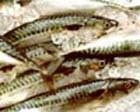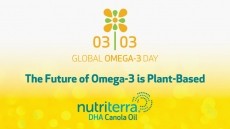Industry applauds high omega-3 standards
The comments follow the release earlier this week of test results from ConsumerLab.com that found 96 percent of omega-3 supplements and fortified foods to be free of contaminants common in fish, including mercury, lead and PCBs.
According to GOED, the successful results can be attributed to advances in refining techniques like the introduction of molecular distillation, activated carbon and other new processing steps into omega-3 oil refining.
This highlights the success of GOED and its predecessor the Omega-3 Working Group of the Council for Responsible Nutrition in improving the quality of the industry, said the organization.
“When the industry came together in 2001 to establish what is now the GOED Voluntary Monograph, their efforts and the widespread adoption of these minimum quality standards has directly led to the success of these recent tests, and the industry’s adoption of the Voluntary Monograph has encouraged the integration of these new technologies,” said Adam Ismail, executive director of GOED.
The EPA and DHA voluntary monograph, which was developed some seven years ago, is part of GOED’s Product Quality Assurance (PQA) Program.
The group’s mandate is to help maintain market growth for EPA and DHA products by educating consumers, healthcare professionals and governmental bodies about the benefits of these fatty acids and generating trust for the products.
According to GOED, the US market for EPA and DHA supplements, functional foods and pharmaceuticals is more than 18 times the size it was in 2001.
EPA, DHA, ALA
EPA (eicosapentaenoic acid) and DHA (docosahexaenoic acid) are derived from marine sources such as oily fish, and DHA can also be derived from microalgae. ALA (alpha-linolenic acid) is derived from plant sources such as flaxseed. . The shorter long-chain omega-3 fatty acid ALA is a precursor to DHA, and has to be converted by the body before it can be used.
While EPA and DHA are 20- and 22-chain chain carbons respectively, ALA is an 18-carbon. Some of the cognitive, heart health and antioxidant benefits are lost in the conversion process elongating ALA's carbon chain.
EPA and DHA did get a regulatory pat on the back from the US Food & Drug Administration in 2004, with the approval of an EPA/DHA health claim for coronary heart disease. The same has not happened in other countries though.
For instance, in Europe health claims legislation is being finalized and it may be some time before products bearing approved claims are on retail shelves. In the meantime, EPA/DHA manufacturers are keen to promote the awareness that omega-3 on labels does not distinguish between EPA, DHA or ALA sources.
GOED is drawing from a diverse membership to get its message out. The group includes multinationals and small privately owned companies, as well as ingredient and consumer product companies.
The trade association was formed out of the dissolution of the Council for Responsible Nutrition's omega-3 working group. The founding member companies were: Cargill, Ceres Consulting, Croda, Denomega, EPAX, Loders, Lonza/Nutranova, Marine Nutraceuticals, Martek Biosciences, Napro Pharma AS, Ocean Nutrition Canada and Omega Pure.
The current burgeoning roster has grown to include players such as: DSM Nutritional Products, DuPont, Lipid Nutrition, Monsanto, NBTY, Nutrition 21, The Solae Company, and Unilever.
Omega-3 tests
The positive omega-3 test results were published on Monday by ConsumerLab.com, an independent product tester. The report is the group’s most comprehensive analysis of fish oils to date, according to ConsumerLab president Tod Cooperman.
A total of 50 omega-3 fish oil supplements, foods and beverages were tested for contaminants and dosage (including two marketed for pets). Out of these, 23 were randomly selected by ConsumerLab to provide a “snapshot” of the market based on popular products found at different retail outlets. The other 27 products were tested at the request of their manufacturers, through ConsumerLab’s Voluntary Certification Program.
According to the results, all products met their label claims in regard to EPA and DHA levels, with levels ranging from 16 mg in a yogurt product to 1,000mg in a single pill.
In addition, all of the products tested were free of contaminants common in fish, including mercury, lead and PCBs. These contaminants have been associated with fish oil supplements in the past, and Consumerlab suggested cleaner fish stocks as well as improved processing had contributed to the glowing report card.













